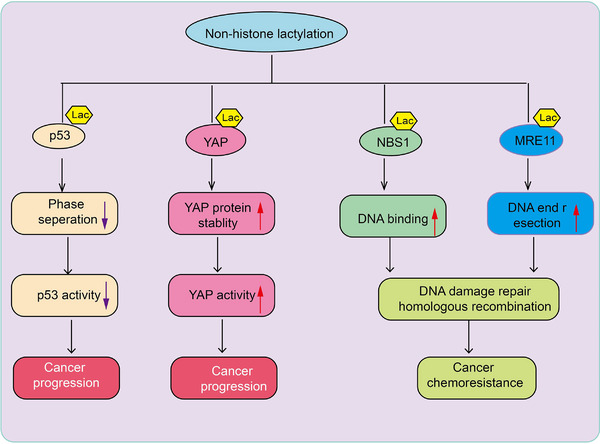FIGURE 2.

The role of nonhistone lactylation in cancer progression and chemoresistance. This schematic diagram illustrates the effects of nonhistone lactylation on key cancer‐related proteins, including p53, YAP, NBS1, and MRE11, highlighting its role in cancer progression and chemoresistance. The lactylation of p53 reduces phase separation, leading to decreased p53 activity. As a tumor suppressor, reduced p53 activity contributes to cancer progression. n: Lactylation of YAP enhances its protein stability, leading to increased YAP activity. YAP is a key effector in the Hippo signaling pathway, and its activation promotes cancer progression. The lactylation of NBS1 enhances its DNA‐binding ability, facilitating homologous recombination‐mediated DNA damage repair. This process contributes to cancer cell survival and chemoresistance. The lactylation of MRE11 enhances DNA end resection, promoting DNA damage repair through homologous recombination. This mechanism supports cancer cell survival under therapeutic stress, leading to chemoresistance.
